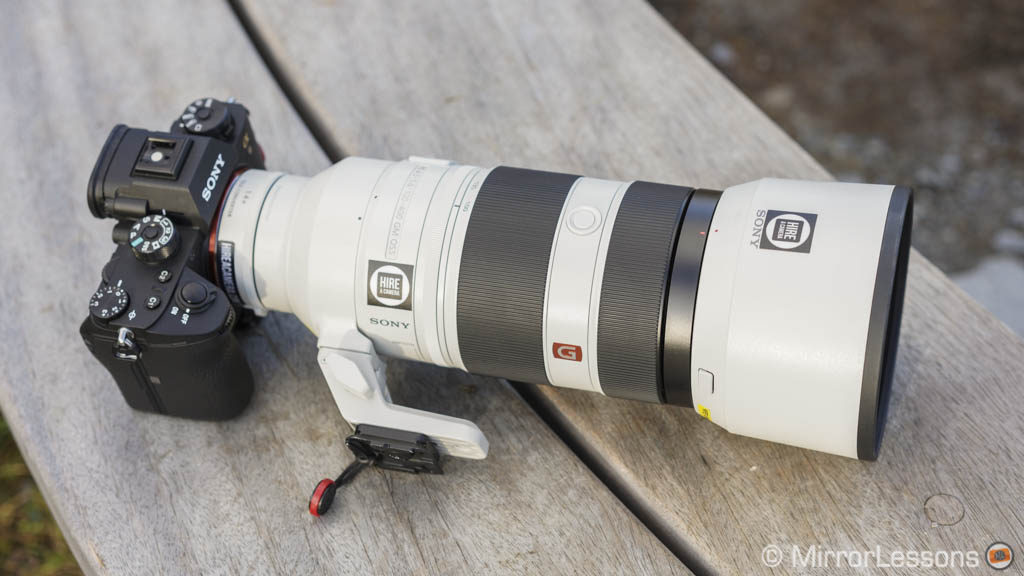Well, a couple of things. For one, there’s no such thing as a “mirrorless SLR”. “SLR” means “Single Lens Reflex”. The “Reflex” part is the mirror. If you don’t have a mirror, you are no kind of reflex camera. A better term is “Mirrorless Interchangeable Lens Camera”, or MILC. All SLRs are ILCs, but not all ILCs are SLRs.
Prior to the 1960s, the premium professional ILC was not the SLR, but the rangefinder. Canon, Nikon, and other modern powerhouses got their start in the 1940s and 1950s making such cameras for professionals. Leica was the originator of the 35mm rangefinder, and one of the only companies to make actual rangefinder ILCs today.
That first modern mirrorless ILC, introduced ten years ago, was the Pansasonic DMC-G1. And almost exactly ten years ago, at Photokina 2008… Photokina 2018 starts next week. Olympus, the other main partner in this first mirrorless SLRsystem, called Micro Four thirds, introduced their first mirrorless SLR camera in the summer of 2009. Because of open licensing, Micro Four Thirds today remains the largest mirrorless system, spanning everything from stills cameras to video/cinema to action/drone cameras.
Growth of Mirrorless SLR
And so, it was on like Donkey Kong! Mirrorless was the path to high-end digital for anyone who wasn’t Nikon or Canon, at least in the opinion of many. But some didn’t fare all that well:
- Ricoh introduced the GXR system in 2009. It’s unlike anything else. They don’t simply have interchangeable lenses, but interchangeable sensor modules. So their 5 lenses have sensors ranging from 1/2.3″ to APS-C, and 10–16 megapixels. The last module they released was an adapter for Leica-M bayonette lenses, with an APS-C sensor. They had a following, but never did very well.
- Samsung introduced their APS-C NX system in 2010; they pretty much walked away from it in 2015, but never officially cancelled it. This, despite at the time having the world’s most advanced APS-C sensor.
- Pentax introduced the Q system in 2011, based on the same 1/2.3″ sensors used in lower-end P&S cameras (yes, it was the 21rst Century answer to the Pentax Auto 110 system). They left the market in 2014.
- Nikon introduced the consumer-oriented Nikon 1 system, based on a 1″ sensor (like the Sony RX10/RX100) in 2011. It was neglected for many years after an initial push, but Nikon made its death official earlier this year (2018).
- In 2012, Pentax introduced their first and only large sensor mirrorless, the Pentax K-01. Unlike every other mirrorless at the time, it used the same mount, the Zeiss/Pentax K-Mount, as Pentax’s DSLRs. Good for lenses, but it made the camera fat. It gave off a distinct “for the love of all that’s holy, make it go away” vibe. They did, that was their first and last.
- Not to be out-weirded by Pentax, Sigma introduced two mirrorless ILCs in 2016, using their special Foveon sensors and the same SA-mount used by their DSLRs. They did a better job of design than Pentax, but they still have an odd look, based on the need for a very deep lens flange to work with DSLR lenses. These are still around — Sigma doesn’t do that well on their own line of cameras, but because of their unusual sensor technology, they have a following.
Others did much better, of course.
- Sony introduced the NEX system/E-Mount in 2010, a line of APS-C cameras in very compact bodies. Intially intended for consumers, they released a few more capable models, and E-Mount-based camcorders as well. In 2012, Sony introduced a full-frame version of theNi E-Mount system, the FE-Mount, the first full-frame mirrorless system.
- Fujifilm introduced the X-mount system in 2012, and also the first hybrid optical/digital rangefinder system. Fujifilm today has a very complete mirrorless system, with bodies from entry level to professional, and the largest selection of prime lenses from a single Cacompany in the mirrorless world.
- Canon introduced the consumer-oriented EOS M system in 2012. This consisted of very compact APS-C cameras. While not a big success in the USA, EOS M is very popular today in Asia, propelling Canon to becoming the second most popular mirrorless in Japan (after Olympus).
- In 2014, Leica introduced the L-Mount system. Being Leica, if you have to ask, you can’t afford it.
- Hasselblad introduced the mirrorless XCD system in 2016. This is medium format. And while very expensive, Hasselblad pretty much surprised the world because of how inexpensive their system is, despite being in pro-only territory.
And that was about it… until last month. Given the 2018 Photokina show next week, and, in general, the fact that Nikon and Canon don’t have 80–90% of the ILC market anymore, both companies have announced professional mirrorless systems, each with a new lens mount.
- Nikon introduced the full frame Nikon Z6 and Z7, along with the new Z-mount, in early August, after about a month or two of weird teaser videos. The two cameras are a direct shot at Sony: the Z7 is Nikon’s answer to Sony’s A7R Mark III (think “mirrorless D850”) and the Z6 is Nikon’s answer to Sony’s A7 Mark III (think “mirrorless D740”). There’s an emphasis on better video, and of course, lots of contravesy among the fans.
- Canon, naturally, had to do the same thing. They introduced the Canon EOS R system a few weeks later. As with Nikon’s Z, the Canon R is full frame, think “mirrorless EOS 5D mark IV”.
This, of course, is all you need to understand to know why Canon and Nikon just introduced mirrorless cameras… but maybe not quite what you think. This last summer, Sony announced that they sold more full-frame ILCs in the USA than either Canon or Nikon. Sony also announced that they believe they’ll be the top camera marker on the planet by sometime in 2021. They threw down a gauntlet. One that Nikon and Canon just picked up this month… and the rumor mills suggest Panasonic might, next week. Possibly releasing a full-frame mirrorless ILC of their own, that is.
Is it a Shift or an Alternative?
When the market started to move to the SLR back in the 1960s, many companies moved in that direction. The SLR made sense for many photographers. But the rangefinder didn’t vanish. Leica and a few others kept making rangefinders. Other companies used the proven technology to enable better lower-end cameras. Leica and Epson made digital rangefinders — Epson’s was actually the first mirrorless ILC, if not recognizable as what we see as MILC today, but they didn’t have a followup model. Leica still makes them.
When Canon introduced the Canon EOS 5D mark II, video got real, and really good, on DSLRs. Since then, it’s been DSLRs and mirrorless pushing the envelope on video quality. And yet, you can still buy a camcoder. In fact, with more variation than ever before, from the GoPro Heros to consumer camcorders, nearly every DSLR and MILC today, to ILC camcorders and Cinema cameras, the market has exploded with options. Not every one necessarily survives, but that’s not to say that DSLRs go away. Most professionals still use them.
A decade ago I was in a startup company called Nomadio. We delivered the first all-digital radio control system for the R/C car market. When you drive a car over a radio, the latency of control — the time between you moving the wheel or hitting the throttle and the car actually moving — is critial. Our systems could deliver 5ms latency, versus the typical 20ms latency.
As a result, we had most of the top professional R/C racers (yes, you can make a 6-digit income if you’re that good) using our controllers pretty quickly. But there was still a holdout or two on the top-ten list of racers. They didn’t even use the more modern CPU-based analog controllers. They were old-skool analog, loved their specific controller, and most important, won with these.
It’s like that here, too. I’m a serious tech nerd, neophile, and early adopter. And even at that, I only switched fully to mirrorless last June. I didn’t have to switch. I still have a number of P&S cameras, some old film SLRs I’ll probably never use again, so I could have kept my Canon DSLR system. But it wasn’t doing me any good. However, for a professional, there’s no rush. Most pros use a number of different cameras.
And for the full-frame cameras, if that’s your thing, Sony has the only full system right now, and it’s not even that big a system. It pales in comparison to Canon or Nikon’s DSLR systems, and that’s going to keep some pros away from Sony. That’s precisely the reason they just introduced their own mirrorless: a better answer than Sony for a Nikon or Canon shooter. But it will be 5 or more years before either of those systems are attractive as primary systems. For awhile, you need EF or F adapters, to use your huge collection of Canon or Nikon glass on the new hotness.

If you look at annual camera sales, there’s a thing to learn about tech bubbles. The sales of film cameras grew over the years as more consumers got into photography in a regular way. When digital came out, things exploded. And while not reflected in that chart, film became a specialty thing. It didn’t completely vanish. In fact, recently, a few out-of-production films are back in production, and the prices of used film cameras is way up.
Did digital explode because digital was fantastic? Nope… in fact, early on, it kind of sucked. The explosion was because the promise of digital was total rock and roll. So millions bought in, and found it wasn’t ready yet. It wasn’t a mature market.
But as cameras became good enough, they gradually stopped being replaced. Yes, some of this represents a shift from cheap P&S to smartphones, but that actually feeds the curve — most people replace their phone after a year or two.
Mirrorless slr, even after ten years, is still kind of up on the way to maturity. The market isn’t stable, and so, it’s interesting. There’s no way to call winners for certain yet, but Sony sure looks good, particularly since they make do many of the camera chips in the industry. Will Canon and Nikon pull serious buyers their way, or does their new presence in the mirrorless SLR market wind up making it legit for holdouts who move to different product lines.
There’s no automatic “MILC will replace DSLR” factor. It’s entirely up to everyone doing the buying and photography. This year’s big battle is over full-frame, but that begs the question: why move to MILC at all? I moved to Micro Four Thirds to get smaller gear, so I didn’t leave so much stuff home. But mirrorless full-frame gets you somewhat smaller bodies, sure, but in many cases, larger lenses. I’m not sure a big bag of gear comes in at any less than the 25lbs. of my old Canon rig. Not to mention needed 3x more batteries. It’s quite possible mirrorless slr and DSLR stablize at some point in the ILC market. There does not have to be a single winner.




Pingback: Avast Premier Activation Code Free 2022 [License Key] Full Version - BlogInstall.com